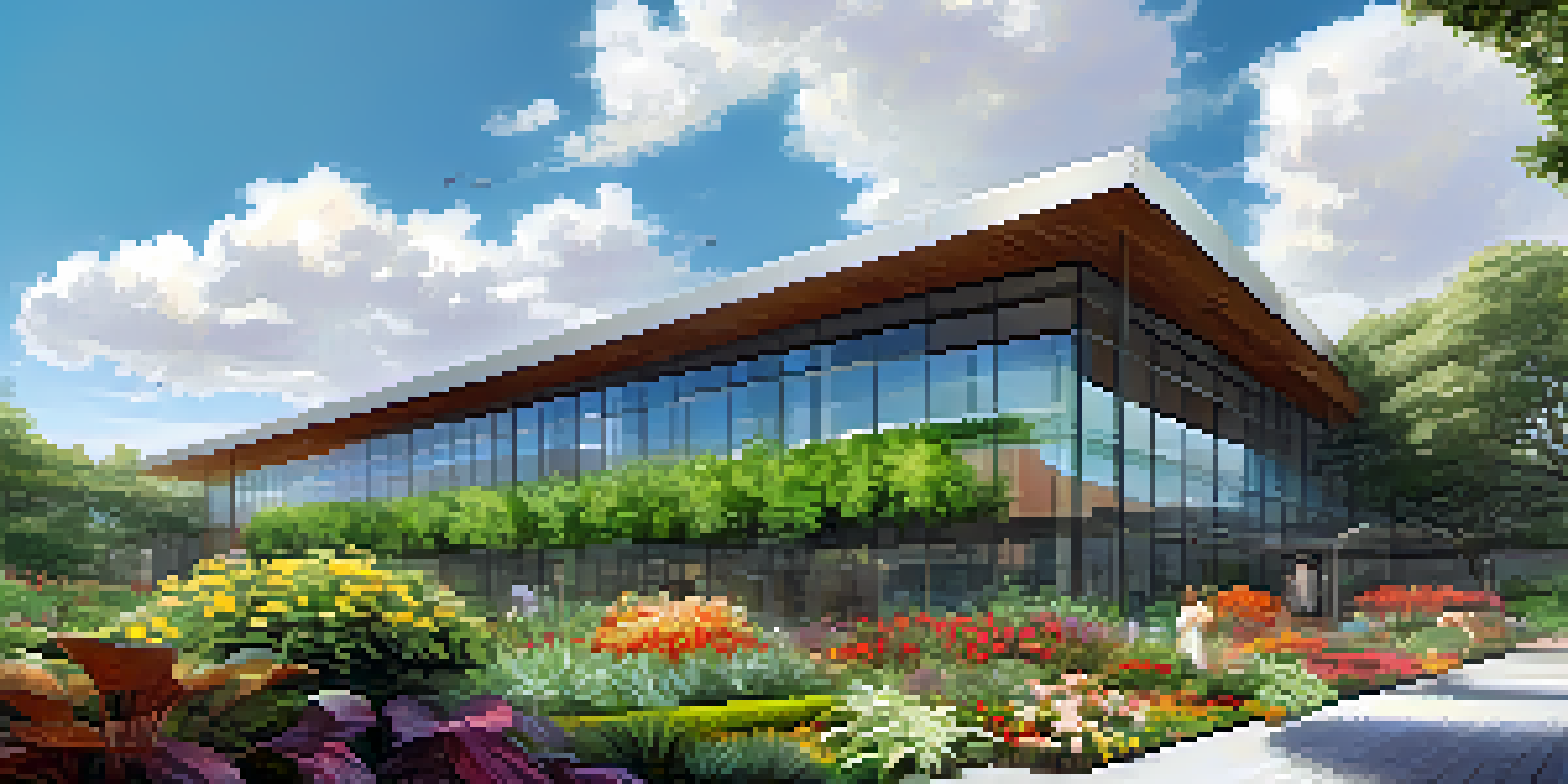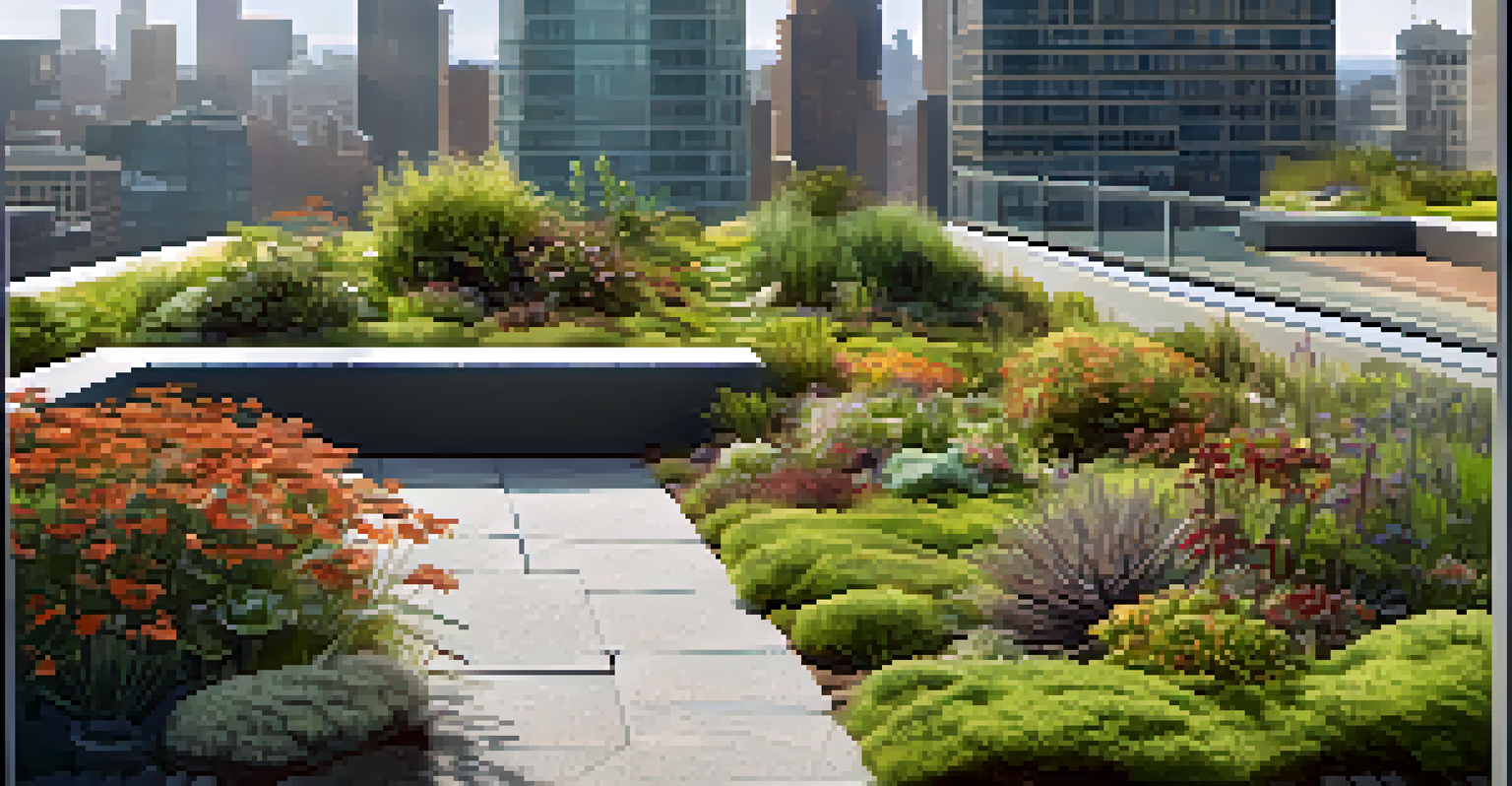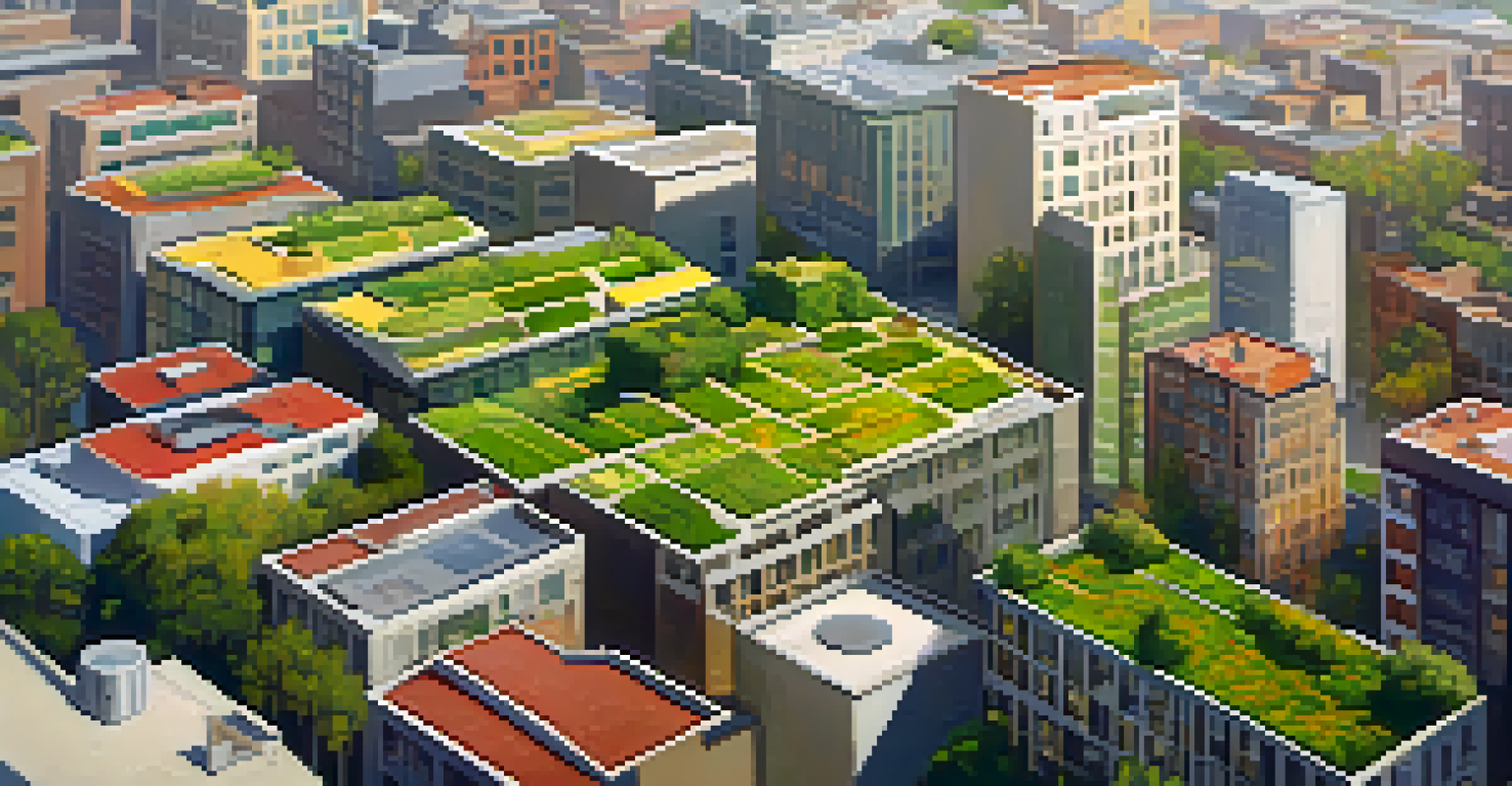Green Roofs: A Solution for Urban Sprawl

Understanding Urban Sprawl and Its Challenges
Urban sprawl refers to the uncontrolled expansion of cities into surrounding areas. This phenomenon often leads to the loss of green spaces, increased traffic congestion, and a decline in air quality. As cities grow, they consume more land, which can disrupt ecosystems and contribute to climate change.
Green roofs are not just a trend; they are a critical part of sustainable urban development.
With more people moving to urban areas, the demand for housing increases. Unfortunately, this often results in the construction of more buildings and roads, further encroaching on natural habitats. The consequences can be dire, leading to a range of social and environmental issues.
To address these challenges, innovative solutions are needed. One such solution gaining traction is the implementation of green roofs, which can offer numerous benefits while simultaneously beautifying urban landscapes.
What Are Green Roofs and How Do They Work?
Green roofs are essentially gardens planted on top of buildings. They consist of layers including waterproofing, insulation, and a growing medium that supports various types of vegetation. This unique structure allows for the absorption of rainwater and insulation, among other benefits.

These rooftops not only provide a space for plants but also help regulate building temperatures. By insulating the building, green roofs can reduce energy consumption, leading to lower heating and cooling costs. Additionally, the plants absorb CO2, improving air quality in urban settings.
Urban Sprawl's Environmental Impact
Urban sprawl leads to the loss of green spaces, increased traffic, and worsened air quality, necessitating innovative solutions like green roofs.
Moreover, green roofs can help mitigate the urban heat island effect, where cities become significantly warmer than surrounding areas due to human activities. By introducing greenery, cities can cool down, making them more comfortable for residents.
Environmental Benefits of Green Roofs
The environmental advantages of green roofs are substantial. They can absorb rainwater, reducing runoff and minimizing the risk of flooding. This is particularly important in densely populated areas where heavy rainfall can overwhelm drainage systems.
The best time to plant a tree was 20 years ago. The second best time is now.
In addition to managing stormwater, green roofs provide habitats for various species, including birds and insects. By creating these small ecosystems, we can support biodiversity even in urban environments, which is crucial for ecological balance.
Furthermore, green roofs can significantly lower air temperatures, thereby reducing the need for air conditioning in buildings. This not only saves energy but also lowers greenhouse gas emissions, contributing to a healthier planet.
Economic Advantages of Implementing Green Roofs
While the initial costs of installing a green roof can be higher than traditional roofing, the long-term savings can be impressive. By improving insulation, buildings can see reduced energy bills, recouping the investment over time. This makes green roofs not just an eco-friendly choice, but a financially smart one.
Additionally, properties with green roofs can experience increased property values. The aesthetic appeal of a green roof can attract tenants and buyers alike, making these buildings more desirable in competitive urban markets.
Benefits of Green Roofs
Green roofs provide environmental, economic, and social benefits, including stormwater management, energy savings, and enhanced community spaces.
Moreover, cities can benefit economically from reduced infrastructure costs. By managing stormwater effectively, municipalities may spend less on drainage systems and flood control measures, redirecting funds to other essential services.
Social Benefits: Enhancing Urban Living
Green roofs can significantly enhance the quality of life for urban residents. They provide much-needed green space in cities, offering a serene spot for relaxation and recreation. This can help combat the stress and anxiety often felt in bustling urban environments.
Incorporating green roofs into urban areas can also foster community engagement. Residents may come together to maintain these spaces or organize events, strengthening community ties and promoting social interaction.
Additionally, green roofs can serve as educational platforms. Schools and community groups can utilize these spaces to learn about sustainability, gardening, and the importance of biodiversity, nurturing a sense of environmental stewardship among urban dwellers.
Challenges and Considerations for Green Roofs
Despite the numerous benefits, the adoption of green roofs comes with challenges. One major hurdle is the initial cost and potential structural requirements for existing buildings. Not all roofs are equipped to handle the added weight of soil and plants, which may necessitate modifications.
Moreover, ongoing maintenance is essential for the health of a green roof. Neglecting these spaces can lead to issues such as weed overgrowth or plant mortality, undermining the roof's intended benefits. It's vital for property owners to understand the commitment involved.
Challenges in Implementing Green Roofs
Despite their advantages, green roofs face challenges such as high initial costs, maintenance needs, and the necessity for suitable plant selection.
Another consideration is the selection of appropriate plant species. Choosing native plants that can thrive in the local climate is crucial for ensuring the roof's sustainability and success. This highlights the need for expert guidance in the planning and implementation phases.
The Future of Green Roofs in Urban Planning
As urbanization continues to rise, the integration of green roofs into city planning is likely to become more prevalent. Many cities around the world are already adopting policies that encourage or mandate green roofs on new developments. This trend reflects a growing recognition of their benefits.
Innovations in technology and design are also making green roofs more accessible. New lightweight materials and modular systems are emerging, allowing for easier installation and maintenance. This can pave the way for more buildings to incorporate greenery into their designs.

Ultimately, the future of urban living may be greener than we imagine. By prioritizing sustainable practices like green roofs, cities can become not only more livable but also more resilient in the face of climate change.